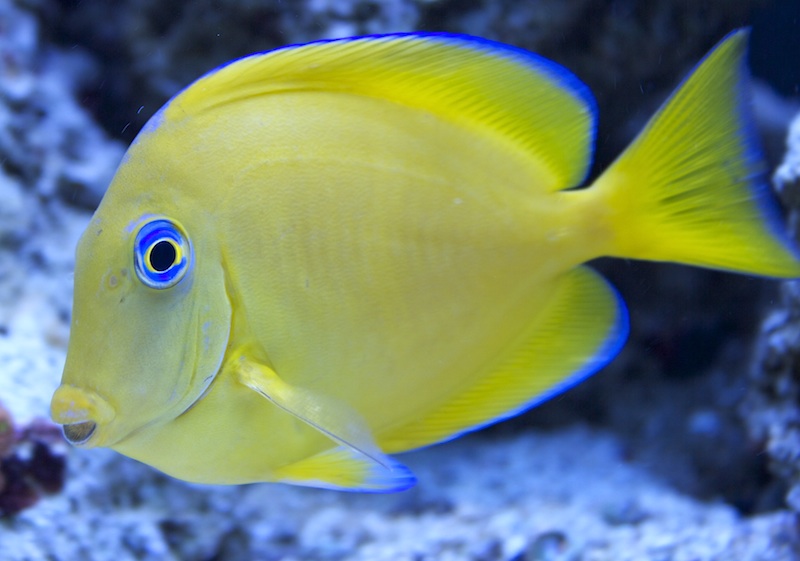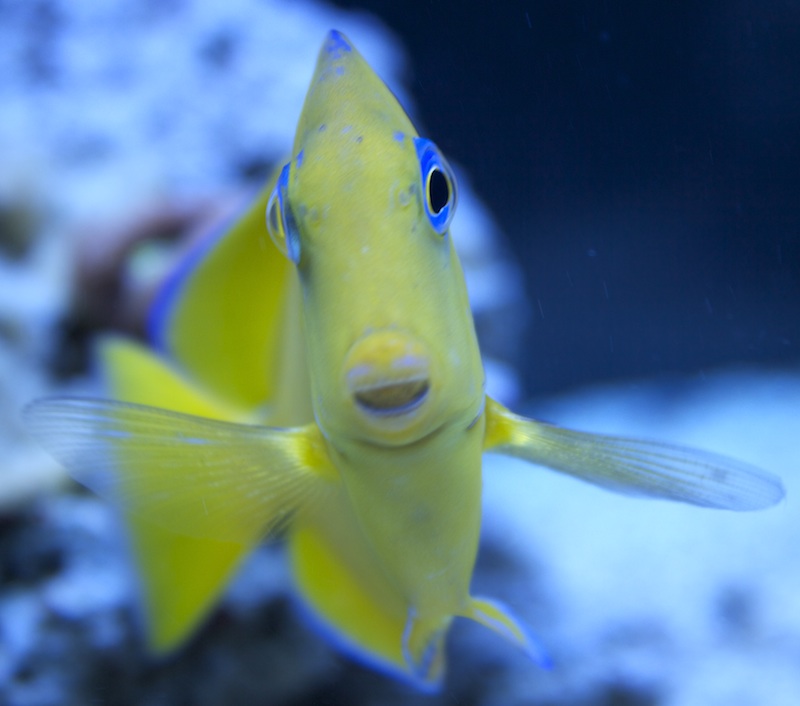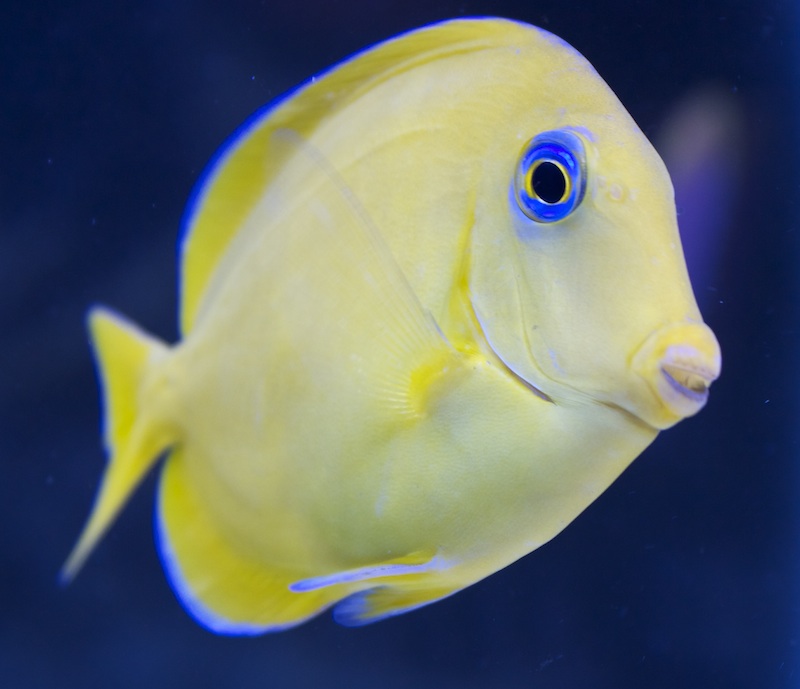Hello All,
Yesterday, when the lights turned on, we were surprised by the appearance of our Atlantic/Caribbean Blue Tang (still a yellow juvenile, obviosuly). He has a bunch of small brown spots/splotches of various shapes on his head and body. Today, there appear to be perhaps 10-15% more spots than there were yesterday.
His/her general behavior and appetite appear unaffected so far. His poo looks the same as it always has, which appears to be digested greens (he eats a lot of nori).
I've had him for 11 months, and he was quarantined before going into the display. All new additions to the tank have been quarantined as well. In QT, I always medicate for external parasites whether I visibly see issues or not, but I don't always medicate for internal parasites.
There are SPS and LPS corals in the tank, but nothing exotic. I also have a RBTA. No fish are aggressive, and there have been no fighting amongst the fish. No fish are showing any problems, only this tang.
What do you all think?
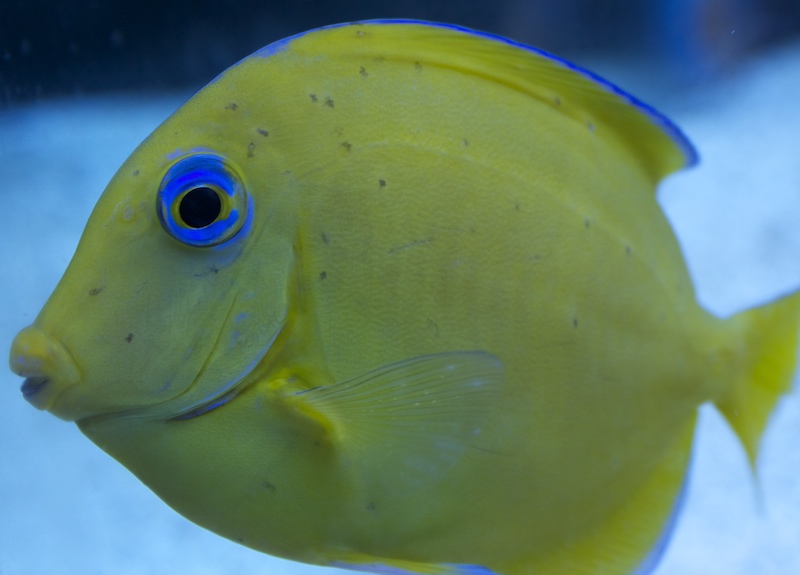
Zoomed in a little:
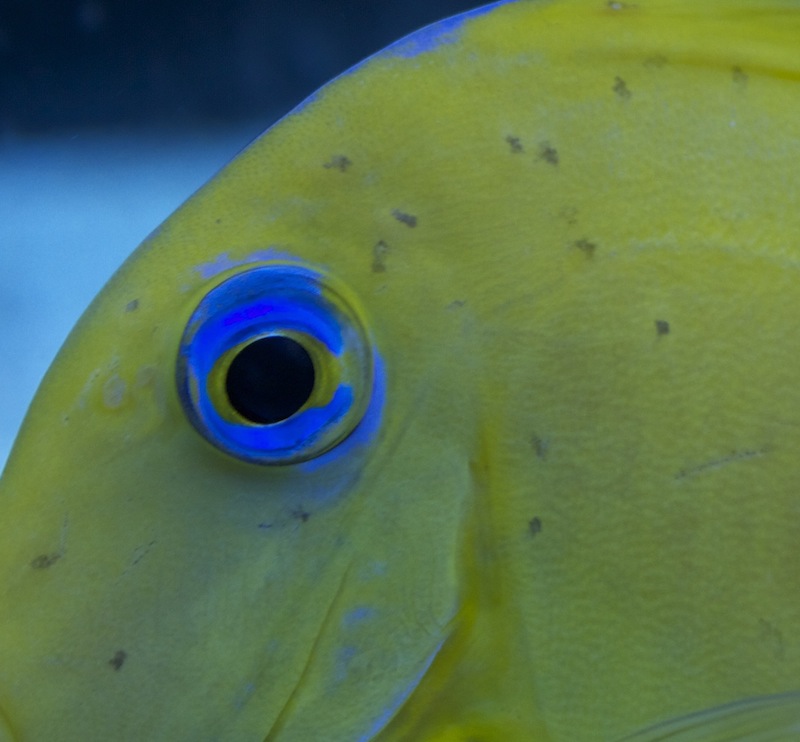
Yesterday, when the lights turned on, we were surprised by the appearance of our Atlantic/Caribbean Blue Tang (still a yellow juvenile, obviosuly). He has a bunch of small brown spots/splotches of various shapes on his head and body. Today, there appear to be perhaps 10-15% more spots than there were yesterday.
His/her general behavior and appetite appear unaffected so far. His poo looks the same as it always has, which appears to be digested greens (he eats a lot of nori).
I've had him for 11 months, and he was quarantined before going into the display. All new additions to the tank have been quarantined as well. In QT, I always medicate for external parasites whether I visibly see issues or not, but I don't always medicate for internal parasites.
There are SPS and LPS corals in the tank, but nothing exotic. I also have a RBTA. No fish are aggressive, and there have been no fighting amongst the fish. No fish are showing any problems, only this tang.
What do you all think?

Zoomed in a little:








